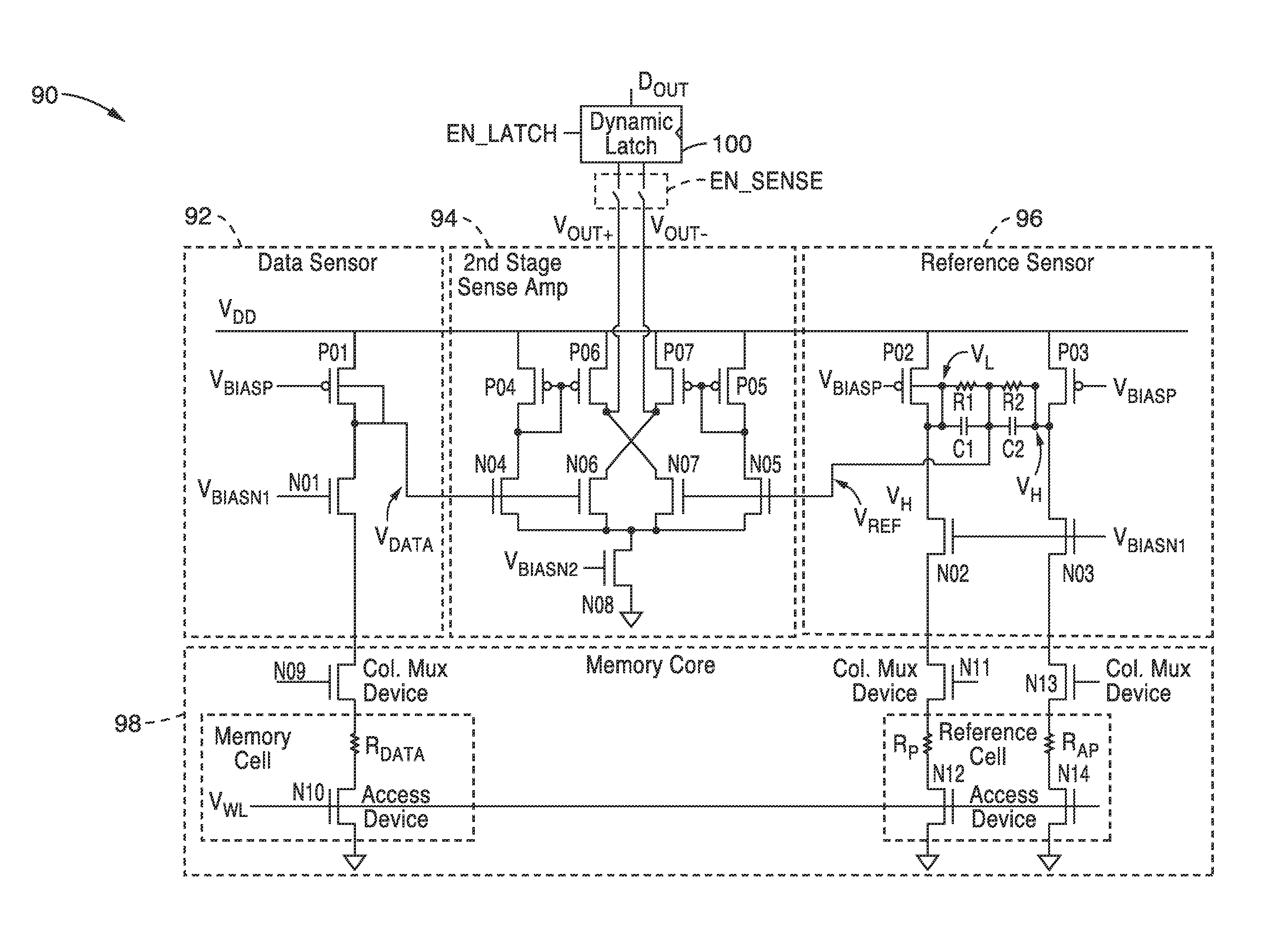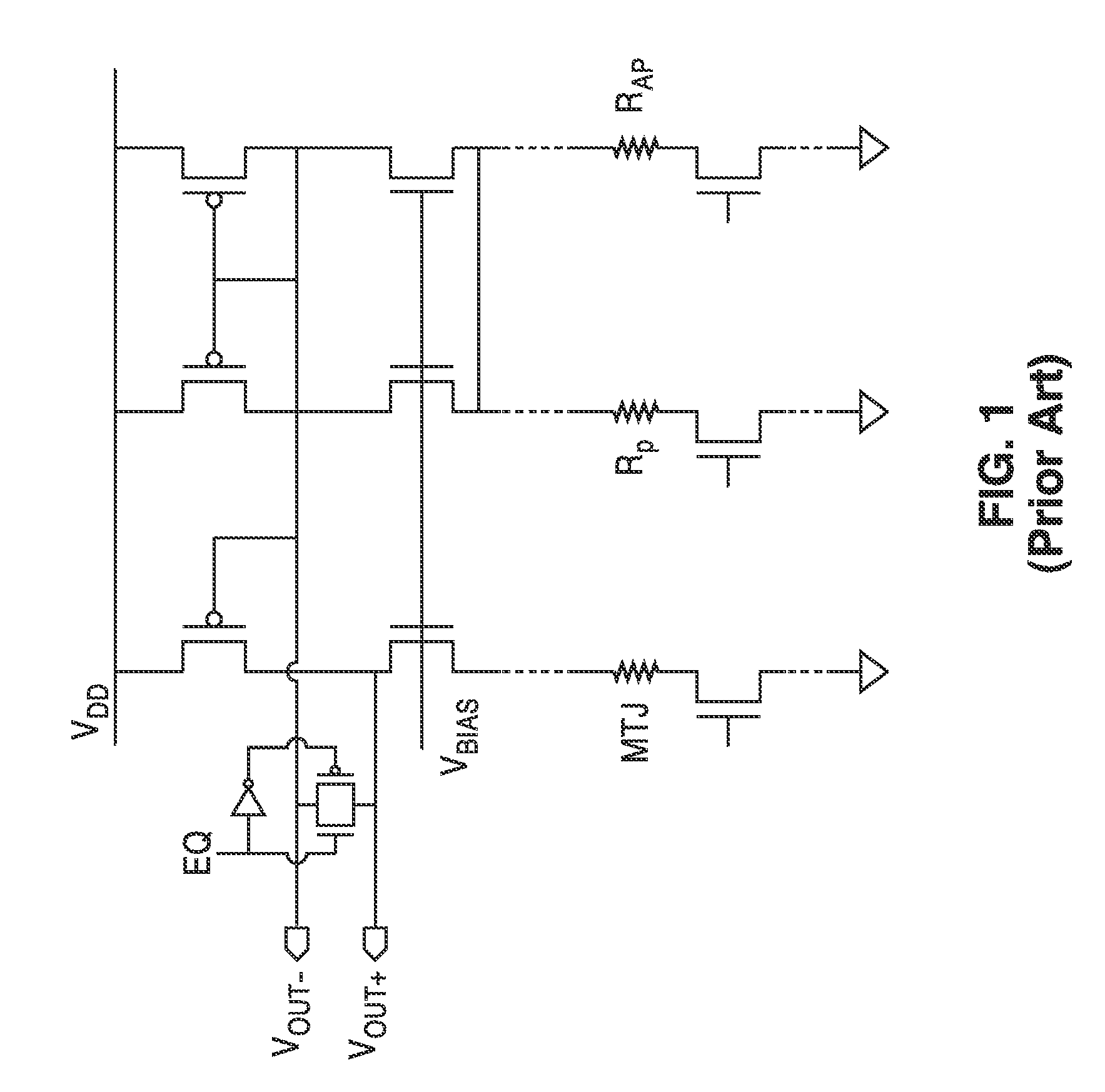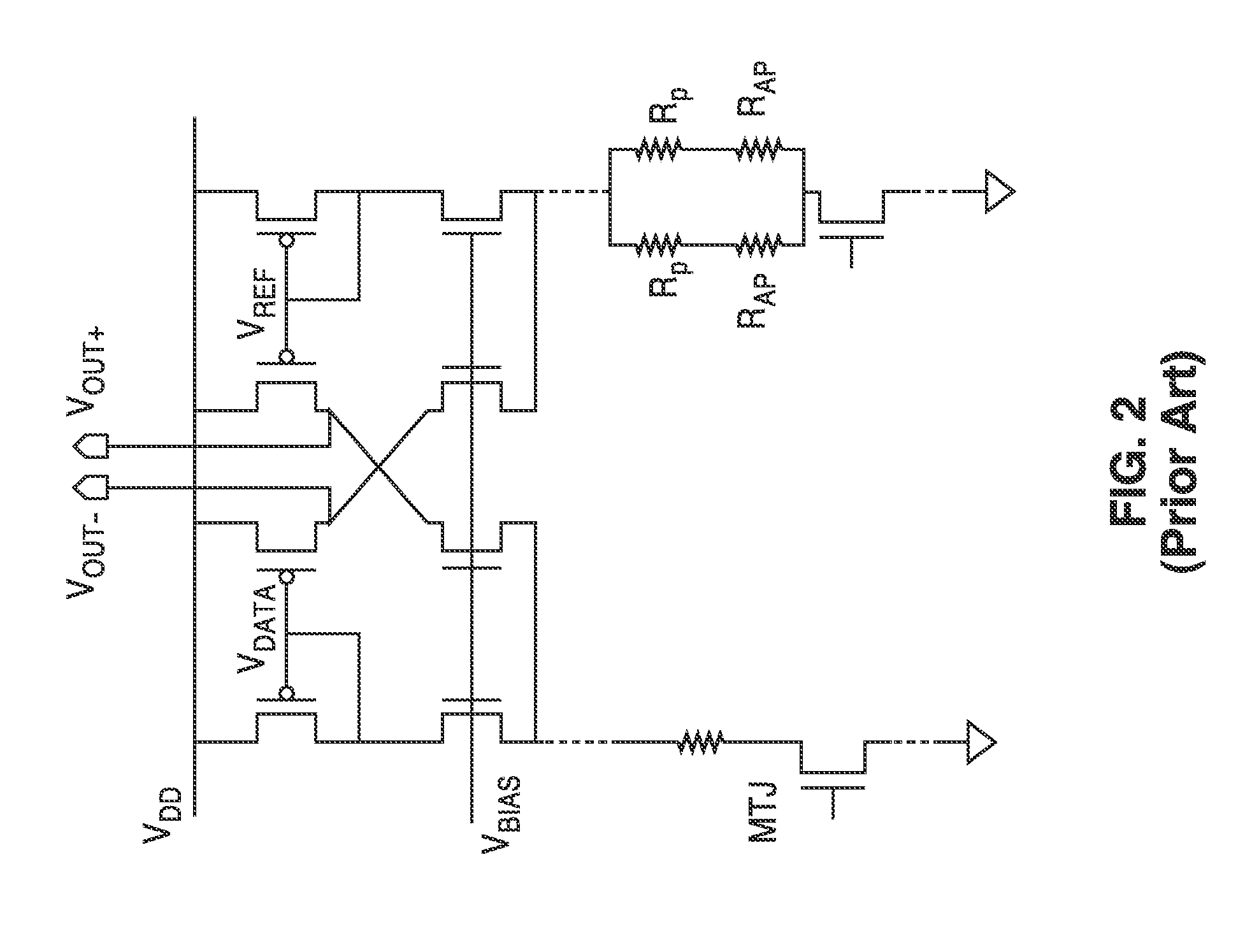Body voltage sensing based short pulse reading circuit
a sensing circuit and body voltage technology, applied in the field of resistance sensing based random access memory (ram) devices, can solve the problems of substantially outperforming the reference design in sensing speed and read margin (rm), and achieve the effect of reducing read disturbance probability, high sensing margin (sm), and high sensing speed
- Summary
- Abstract
- Description
- Claims
- Application Information
AI Technical Summary
Benefits of technology
Problems solved by technology
Method used
Image
Examples
Embodiment Construction
1. High Speed Reading of STT-RAM
[0031]1.1. MTJ Switching
[0032]In this section, the STT-RAM is used as an application example of the inventive reading circuit, however, the inventive read circuit is not limited to application within STT-RAM devices. One of ordinary skill in the art will recognize that the inventive reading circuit may be applied in any memory device in which the memory states are determined in response to different resistance levels.
[0033]The key memory device in STT-RAM devices is the magnetic tunnel junction (MTJ), which has two ferromagnetic layers separated by a thin, nonconductive tunneling barrier. The thicker layer, called the fixed layer (or pinned layer), has a certain layer stack structure fixing its magnetic orientation. The thinner layer, whose magnetic orientation can be changed freely, is called the free layer. The MTJ exhibits two resistive states determined by the relative magnetization directions of the fixed and the free layers: a parallel (P) orien...
PUM
 Login to View More
Login to View More Abstract
Description
Claims
Application Information
 Login to View More
Login to View More - R&D
- Intellectual Property
- Life Sciences
- Materials
- Tech Scout
- Unparalleled Data Quality
- Higher Quality Content
- 60% Fewer Hallucinations
Browse by: Latest US Patents, China's latest patents, Technical Efficacy Thesaurus, Application Domain, Technology Topic, Popular Technical Reports.
© 2025 PatSnap. All rights reserved.Legal|Privacy policy|Modern Slavery Act Transparency Statement|Sitemap|About US| Contact US: help@patsnap.com



